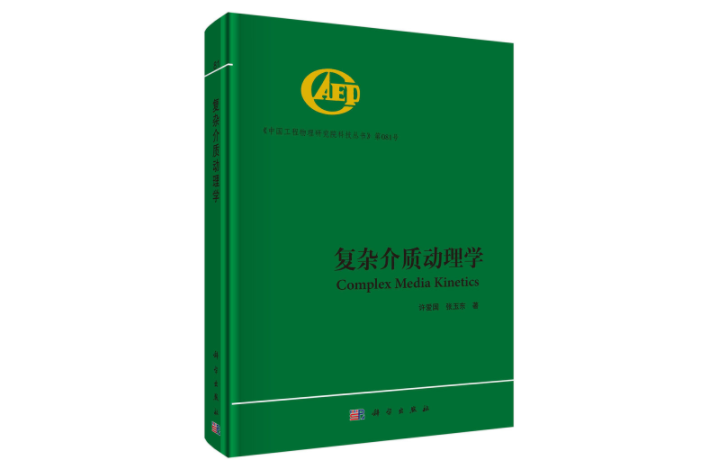圖書目錄
第1章 基礎知識
1
1.1 引言 1
1.2 衝擊波簡介 2
1.3 多相流簡介 5
1.4 物理力學簡介 6
1.5 哈密頓力學簡介 9
1.6 熱力學簡介 10
1.6.1 基本概念 10
1.6.2 平衡態熱力學 10
1.6.3 非平衡態熱力學 17
1.7 統計物理簡介 23
1.7.1 統計物理學概述 23
1.7.2 平衡態統計力學 27
1.7.3 非平衡態統計力學 31
第2章 物理模型和模擬方法
41
2.1 粗粒化物理建模概述 41
2.2 分子動力學理論與方法 49
2.3 連續介質理論與方法:固體力學 54
2.3.1 物理模型 56
2.3.2 物質點方法 57
2.4 連續介質理論與方法:流體力學 59
2.5 從元胞自動機到離散玻爾茲曼 67
2.5.1 元胞自動機 67
2.5.2 格子玻爾茲曼 68
2.5.3 離散玻爾茲曼 69
2.5.4 數值解法與物理建模 72
第3章 離散玻爾茲曼方法
74
3.1 現實問題與必要性 74
3.2 DBM 建模的理論框架 76
3.2.1 DBM 建模引言 76
3.2.2 玻爾茲曼方程簡介 77
3.2.3 動理學巨觀建模 83
3.2.4 動理學直接建模:DBM 91
3.3 滑移流動的 DBM 建模 99
3.3.1 滑移流簡介 99
3.3.2 克努森數的含義 101
3.3.3 DBM 建模 102
3.3.4 邊界條件 104
3.3.5 模擬結果與分析 106
3.3.6 小結 112
3.4 過渡流動的 DBM 建模 112
3.4.1 基於 ES-BGK 模型的 DBM 建模 112
3.4.2 基於 Shakhov 模型的 DBM 建模 132
3.5 更深程度非平衡流動的 DBM 建模 157
3.6 燃燒系統的 DBM 建模 159
3.6.1 燃燒問題的研究 160
3.6.2 傳統模型的 LBM 解法 161
3.6.3 燃燒系統的 DBM 建模:概述 162
3.6.4 燃燒系統的 DBM 建模:實例 165
3.7 電漿系統的 DBM 建模 180
3.7.1 電漿系統的動理學描述 180
3.7.2 電漿激波 182
3.8 多相流動的 DBM 建模 196
3.8.1 多相流動的研究 196
3.8.2 范德瓦耳斯理論 197
3.8.3 傳統模型的 LBM 解法 204
3.8.4 基於 DBM 的多相流模型 205
3.9 DBM 建模與 LBM 解法的比較 225
3.10 其他相關問題與小結 227
第4章 複雜物理場分析方法
230
4.1 基於規則點的結構和物理場分析 230
4.1.1 流變學描述 230
4.1.2 形態學描述 232
4.2 基於無規點的結構和物理場分析 235
4.2.1 GISO 簡介 236
4.2.2 基於 SHT 的結構管理 236
4.2.3 基於 SHT 的快速搜尋法 237
4.2.4 GISO 的套用 238
4.3 流場模擬中的示蹤粒子法 246
4.3.1 示蹤粒子的引入 246
4.3.2 套用舉例 248
第5章 複雜介質動態回響:模擬研究
252
5.1 物質點模擬:整體行為 252
5.1.1 平均行為及其漲落 252
5.1.2 形態學分析 260
5.2 物質點模擬:局域行為 273
5.2.1 衝擊載入 273
5.2.2 衝擊卸載 279
5.3 離散玻爾茲曼模擬 288
5.3.1 多相流與相變 288
5.3.2 燃燒與爆轟 310
5.3.3 流體不穩定性 327
5.4 分子動力學模擬 352
5.4.1 微結構產生機制 352
5.4.2 微結構演化機制 356
5.4.3 從微觀到介觀:粗粒化建模 359
5.5 類分子動力學模擬 361
第6章 結論與展望
368
參考文獻
371
附錄一 關於 DBM 的幾個常見問題
390
附錄二 兩類動理學方法
396
附錄三 基於相空間的建模與描述方法
398
附錄四 DBM 程式示例與說明
401
附錄五 DBM 與高階有限差分 LBM
414
附錄六 基本泛函理論
416
附錄七 中英文人名對照
表 419
圖書內容
Chapter 1
Basic Knowledge 1
1.1 Introduction 1
1.2 Introduction to shock wave 2
1.3 Introduction to multiphase flow 5
1.4 Introduction to physical mechanics 6
1.5 Introduction to Hamiltonian mechanics 9
1.6 Introduction to thermodynamics 10
1.6.1 Basic concepts 10
1.6.2 Equilibrium thermodynamics 10
1.6.3 Non-equilibrium thermodynamics 17
1.7 Introduction to statistical physics 23
1.7.1 Overview of statistical physics 23
1.7.2 Equilibrium state statistical mechanics 27
1.7.3 Non-equilibrium state statistical mechanics 31
Chapter 2
Physical Models and Simulation Methods 41
2.1 Overview of coarse-grained physical modeling 41
2.2 Molecular dynamics theories and methods 49
2.3 Continuum theory and methods: solid mechanics 54
2.3.1 Physical model 56
2.3.2 Material point method 57
2.4 Continuum theory and methods: fluid mechanics 59
2.5 From cellular automata to discrete Boltzmann 67
2.5.1 Cellular automata 67
2.5.2 Lattice Boltzmann 68
2.5.3 Discrete Boltzmann 69
2.5.4 Numerical scheme and physical modeling 72
Chapter 3
Discrete Boltzmann Method 74
3.1 Reality and necessity 74
3.2 Theoretical framework for DBM modeling 76
3.2.1 Introduction of DBM modeling 76
3.2.2 Brief introduction to Boltzmann equation 77
3.2.3 Kinetic macro modeling 83
3.2.4 Kinetic direct modeling: DBM 91
3.3 DBM modeling of slip flow 99
3.3.1 Introduction to slip flow 99
3.3.2 Connotation of the Knudsen number 101
3.3.3 DBM modeling 102
3.3.4 Boundary conditions 104
3.3.5 Simulation results and analysis 106
3.3.6 Brief summary 112
3.4 DBM modeling of transition flow 112
3.4.1 DBM modeling based on ES-BGK model 112
3.4.2 DBM modeling based on Shakhov model 132
3.5 DBM modeling of deeper nonequilibrium flows 157
3.6 DBM modeling of combustion system 159
3.6.1 Studies on combustion problems 160
3.6.2 LBM scheme for traditional models 161
3.6.3 DBM modeling of combustion system: overview 162
3.6.4 DBM modeling of combustion system: examples 165
3.7 DBM modeling of plasma system 180
3.7.1 Kinetic description of plasma system 180
3.7.2 Plasma shock 182
3.8 DBM modeling of multiphase flow 196
3.8.1 Studies on multiphase flows 196
3.8.2 van der Waals theory 197
3.8.3 LBM scheme for traditional models 204
3.8.4 Multiphase flow model based on DBM 205
3.9 DBM modeling versus LBM schemes 225
3.10 Other related questions and summaries 227
Chapter 4
Analysis Method of Complex Physical Field 230
4.1 Structure and physical field analysis based on regular points 230
4.1.1 Rheological description 230
4.1.2 Morphological description 232
4.2 Structure and physical field analysis based on irregular points 235
4.2.1 Introduction to GISO 236
4.2.2 Structure management based on SHT 236
4.2.3 Fast search method based on SHT 237
4.2.4 Application of GISO 238
4.3 Tracer particle method in flow field simulation 246
4.3.1 Introduction of tracer particles 246
4.3.2 Application examples 248
Chapter 5
Kinetic Responses of Complex Media: Simulation Study 252
5.1 Matter point simulation: overall behavior 252
5.1.1 Average behaviors and corresponding fluctuations 252
5.1.2 Morphological analysis 260
5.2 Material point simulation: local behavior 273
5.2.1 Shock loading 273
5.2.2 Shock unloading 279
5.3 Discrete Boltzmann simulation 288
5.3.1 Multiphase flow and phase transition 288
5.3.2 Combustion and detonation 310
5.3.3 Hydrodynamic instability 327
5.4 Molecular dynamics simulation 352
5.4.1 Generation mechanism of microstructure 352
5.4.2 Evolution mechanism of microstructure 356
5.4.3 From microscale to mesoscale: coarse grained modeling 359
5.5 Molecular dynamics-like simulation 361
Chapter 6
Conclusion and Prospect 368
References
371
Appendix I
Common Questions about DBM 390
Appendix II
Two Kinds of Kinetic Methods 396
Appendix III
Modeling and Description Method Based on Phase Space 398
Appendix IV
Example and Description of DBM Program 401
Appendix V
DBM Versus Higher Order Finite Difference LBM 414 Appendix VI Basic Functional Theory 416
Appendix VII
Comparison Table of Chinese and English Names 419

